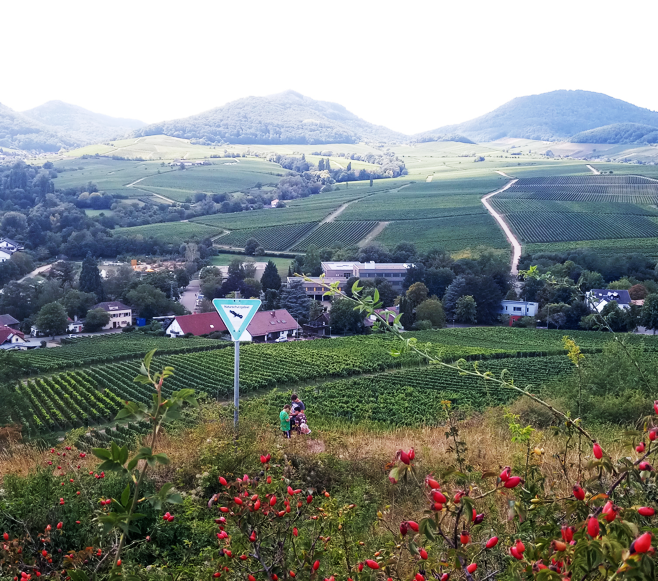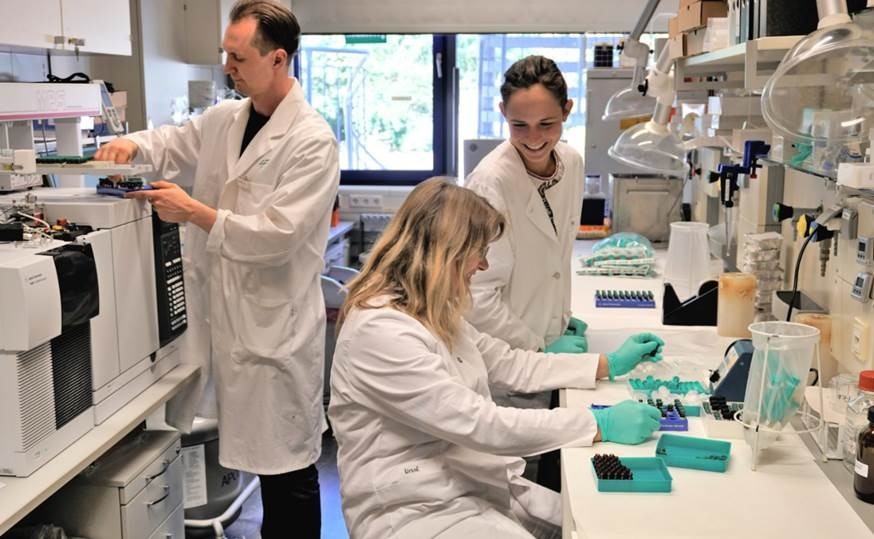With observations of declining insects in agricultural landscapes, research is focusing on figuring out the role of potential stressors, such as structural homogeneity, fertilizer and pesticide inputs. In this blog, Carolina Honert explains how their project “InsectExpo” can fill these knowledge gaps.
To date there is no good data for the real exposure of insects towards pesticides. And there are many open questions: How high is the contamination of a conservation area close to crops or agricultural field margins? What are exposure levels of insects through resources such as pollen or leaf material? And finally, does this contamination represent a risk to insects?

These are the questions Ursel Ansorge and I want to answer in the project “Experimental investigations into the main risks of insect populations (InsectExpo)”. In this project, which is funded by the German Federal Agency for Nature Conservation (Bundesamt für Naturschutz, BfN), we will quantify the pesticide exposure of insect populations and measure the change in exposure over the cropping season, as well as the degradation of the pesticides over time.
During pesticide application, there is always overspray, resulting in pesticide drift which can enter nearby soil and vegetation. But how does this contamination vary by distance to the field? How many pesticides are present in mixtures? For the project, we are going to collect samples from leaves, flowers, pollen, water (e.g., puddles), and soil in the field, at the field edge, and in the neighboring area. The samples will be analyzed using High Performance Liquid Chromatography (HPLC) and Gas Chromatography (GC) for more than 100 of the most common pesticides applied in Germany, which allows to detect even very small amounts of pesticides.

To generate more information about the persistence of pesticides in the environment under realistic conditions, we will perform an experiment applying a known and realistic pesticide mixture, which allows us to calculate degradation kinetics. Sampling will take place on a continuous timeline following application, to get a detailed picture of the degradation processes.
As third part of the project, we will study the effects of realistic pesticide mixtures on the model organism red mason bee (Osmia bicornis). Nesting aids allow to sample the bee-collected pollen as well as soil in the breeding cells (the bee collects moist soil to construct a cell separation). Both matrices can be contaminated with pesticides and therefore cause a chronic exposure of the developing larvae. Therefore, we will monitor larval development in this study.
When combining the results of all these experiments, we will be able to characterize realistic pesticide exposure mixtures, which can inform risk assessments for terrestrial insects.
Meet the team
Carolina Honert and Ursel Ansorge recently joined the University of Koblenz-Landau for this project.
Carolina studied biology at the Technical University of Munich and now started her PhD in InsectExpo. During her studies she worked in different fields, including analytics, isotopes, phytohormones, phytopathology, ecology, wild bees…. As she worked as a student assistant with forest pests and performed a literature research on the effects of pesticides to non-target organisms, she is excited to work now directly on the missing information of pesticide exposure and effects on insects.
Ursel has a broad knowledge and experience in chemical analytics. She worked with isotopes, inorganic and organic analytics for a couple of years in different companies. Ursel always wanted to work at the University at Landau and she is looking forward to a diverse laboratory daily routine with a lot of analytics, method developing, and also collecting samples in the field.
